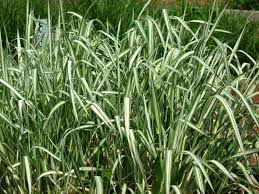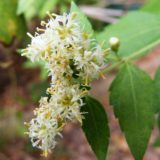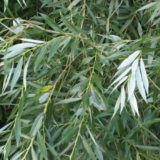Table of Contents
How to Synthesize DMT Using Phalaris arundinacea
DMT Guide: How to Synthesize DMT

DMT and many similar compounds can be derived from a number of plants which are legal to possess and may grow in the United States, and around the world. There have been many synthesis guides published in a variety of magazines, books and other resources. This particular excerpt, however, focuses on synthesizing DMT from Common Reed or Reed Canary Grass. Common reed grows everywhere, it is found all around the world (or something extremely similar with DMT content). There are many analogs out there as well that can still be synthesized, which basically means synthesizing a close relative of DMT. Some of these analogs include: diethylamine (yielding DET), dipropylamine (eventually yields DPT), methylethylamine (yielding methylethyltryptamine), methylpropylamine (yielding methylpropyltryptamine), ethylpropylamine (yielding ethylpropyltryptamine), and many more.
Typically it does not require much equipment or experience to synthesize DMT or an analog, however, it does sometimes require a few closely watched ingredients. LiAlH4 is an example of one of those closely watched ingredients. This is also because some of these substances are prone to explosion or are otherwise dangerous in certain circumstances. LiAlH4 has been known to explode and cannot be combined with water at all. Friction will also ignite it. These types of compounds make the synthesis of DMT dangerous, and thus, careful attention to detail is always advised.
Instructions for Synthesizing DMT
A tip of the hat to the original guide for the synthesis of DMT goes to Jim DeKorne (Psychedelic Shamanism). This extraction is meant for Phalaris arundinacea or P. aquatica.
Step 1: Cutting and Grinding the Grass
The first step is to get the grass cut up as much as possible. This will make it easier to pulverize or otherwise grind. Grinding the grass up increases surface area and will lead to a better extraction, so it is suggested to take plenty of time on this step.
Step 2: Creating an Aqueous Solution

This step is simple, but still essential. Add enough water to make an aqueous solution, this will make the pulverized botanical pour-worthy.
Step 3: Combining the Acid
White vinegar, lemon juice or acetic acid are the acids most commonly used. Adding acid to the solution, only enough to lower the pH to around 5, is essential. Most people place this solution in a slow cooker or crockpot overnight on a light simmer.
Step 4: Filtering the Solution
Using a coffee filter, cheesecloth, or similar filtering device, strain the plant matter out of the solution. The plant matter can now be disposed of and is considered empty weight, aka “garbage.”
Step 5: Separation of Layers
A solvent is required for this step to remove the fat. Most people seem to use Coleman fuel or even lighter fluid (naphtha), however, ether, chloroform and methylene chloride can also be used. This will remove the oils from the remaining solution. Adding just enough to separate the mixture into two parts will work. After the solvent is added, the container is vigorously shook for a few moments and then placed aside until the layers have clearly and visibly separated (the solvent would have extracted the fats and oils from the rest of the solution at this point).
Step 6: Retrieving the Good Stuff
There are two layers which have formed, the solvent (which has absorbed all of the unwanted material as well), and the good stuff. To separate the two, a turkey baster, separation funnel or other layer separation device will be required. The solvent can be discarded after it is removed from the solution.
Step 7: Making Freebase

Ammonium hydroxide is required for this step, or some people use a certain type of drain cleaner known as “sodium hydroxide,” which are lye crystals. Whichever is chosen must be dissolved into water, and then it can be added to the other solution in small increments. Each time a little is added, the solution should be shook and the pH tested, stopping once the pH reaches 9-10. At this point, the alkaloids will be considered in “freebase form” and can be extracted.
Step 8: Second Solvent Layer
Just as in step 5, another solvent has to be added to the solution at this point. 10% worth of the solution should be added in form of solvent (if you have 1000 ml of solution, you would add 100 ml of solvent). Coleman starting fuel seems to work great, or lighter fluid. The container should be kept closed tightly so no evaporation can occur. The container needs to sit, being shook 3 times a day, and each time, the solvent should be removed after the first 24 hours. After a few more days, more solvent is added (still shaking 3 times a day), and after the first week the solvent layer is removed again after being allowed to settle. The process is continued like this for as long as it takes, usually about 2-4 weeks, until the extraction is complete. The solvent layer will be easy to identify and is usually much darker than the rest of the solution, usually looking brown, yellow, orange, or yellow in color. Remember to reseal the container each time tightly, as to not allow evaporation in between opening the container.
Important: These solvent fractions that are being collected are the good stuff!
Step9: Evaporation

After the extraction is complete, the remaining solvent fractions should be placed into a glass dish or a pan and given time in the open air. This will allow evaporation to do the rest of the work. Remember never to place the pan or dish near open flames, sparks or fire, as it can ignite. The residue that remains after the evaporation is complete contains the tryptamine alkaloids and can be pressed into tabs or loaded into gelatin capsules. It is acceptable to thicken more gummy resin with ordinary cooking flour until it is thicker, but it can affect doses, and can be difficult to do evenly.
Step10: Store
That’s it! It’s pretty easy to store afterwards, either in the capsule or gelatin form, or in a glass or metal container of some kind. It is always important to keep the substance away from fire, sparks or open flames of any kind. Best not to get it wet either. Be careful and look into the laws in your country before synthesizing, using or even possessing DMT or any analog, as in the United States and many countries it is illegal.*
DMT Synthesis Tips

Although DMT synthesis may seem pretty basic, it is still best to remember some common tips. Firstly, it is recommended that if a combustible or flammable substance be used, that attention to the environment be taken into consideration. Secondly, it is wise to remember to fully investigate the chemical and physical properties of each precursor and ingredients which go into the synthesis, no matter what type of synthesis is being done. For example, the last thing someone would want is to drop a piece of LiAlH4, which would ignite it into flames. Adding water would be a mistake, as it would explode when being exposed to the hydrogen molecules and an overload of O2. Even if someone is an amateur psychonaut who only wants to synthesize DMT one time, all experts in psychedelic synthesis and professionals suggest getting to know the chemicals before going into synthesis.
Finally, always remember that there are many analogs to DMT which can be much stronger or much weaker than DMT. Amateurs may post guides or instructions online for “making DMT” out of a particular plant or substance, not even realizing that their production is for an analog. Sometimes that analog can be MUCH stronger than DMT (such as dipropylamine). Experienced psychonauts always suggest thoroughly understanding the synthesis process and the chemicals involved before attempting the procedure.
*Disclaimer: Botanical Shaman authors do not condone illegal drug use. By law, it is required that the intention of this article be known only for educational purposes. DMT, synthesizing DMT, using DMT, and owning some plants containing DMT is illegal in many places, including the United States.




